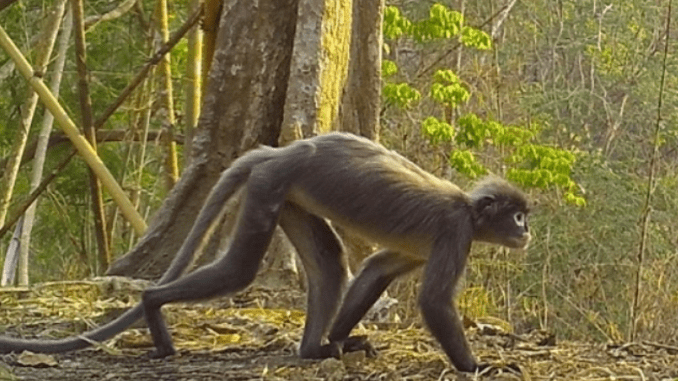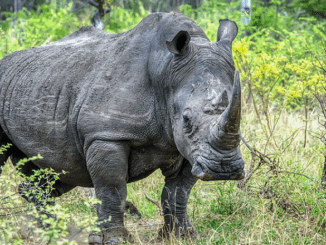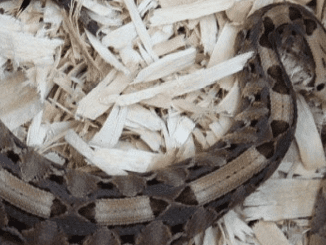
VIENTIANE, Laos, January 29, 2022 (ENS) – On the steep hillsides of the dormant volcano that is Myanmar’s sacred Mount Popa, live more than 100 monkeys of a newly discovered species, just described and identified but already considered critically endangered. They are threatened by hunting and loss of habitat to agriculture and logging.
The Popa langur, Trachypithecus popa, is just one of 224 new species documented by the World Wide Fund For Nature, WWF, in its latest report from the Greater Mekong region.
The region takes its name from the great Mekong River, Asia’s sixth largest, that runs from its source high on the Tibetan Plateau through China, Myanmar, Laos, Thailand, Cambodia, and Vietnam to enter the South China Sea through a complex delta system.
Hundreds of scientists from universities, conservation organizations and research institutes around the world contributed their discoveries of 224 previously unknown species to the WWF report. They identified 155 new plants, 35 reptiles, 17 amphibians, 16 fishes, and one mammal – the Popa langur.
There are an estimated 159 species of langurs in the world. The unique Popa langur was identified based on genetic matching of recently gathered bones with specimens from Britain’s Natural History Museum collected more than a century ago, the WWF report said. The Popa langue is distinguished by the broad white rings around its eyes and its front-pointing whiskers.
The WWF, working with the British NGO Fauna and Flora International, FFI, caught images of Popa langurs using camera traps in 2018. FFI reported the discovery late last year.
The WWF report features just the latest list of newly discovered species in the Greater Mekong. During the quarter-century since 1997, scientists have found 3,007 new species in the region.
“With over 3,000 new species in the past 24 years, the Greater Mekong region is no doubt a world heavyweight contender for species discoveries,” said K. Yoganand, WWF-Greater Mekong’s regional wildlife lead for wildlife and wildlife crime.
“These species are extraordinary, beautiful products of millions of years of evolution, but are under intense threat, with many species going extinct even before they are described,” Yoganand said. “They require our greatest respect, utmost attention and urgent actions to protect their habitats and minimize exploitation.”
New species from the WWF report include:
• An orange-brown knobby newt from Thailand, Tylototriton phukhaensis, has horns and a racing stripe. It was originally noticed in a 20-year-old photograph from a travel magazine, sparking researchers’ interest in discovering if it still exists.
• Amomum foetidum, a plant from the ginger family, was discovered in a plant shop in eastern Thailand and emits a pungent odor. It’s often used as a substitute for stink bugs in a popular chili paste.
• Leptobrachium lunatum is a big-headed frog from Vietnam and Cambodia threatened by ongoing deforestation and harvesting of its tadpoles for food.
• Thailand’s San Phueng rock gecko, Cnemaspis selenolagus, is yellow-orange on its upper body and gray halfway down its back, for camouflage.
• A newly discovered bamboo species from Laos, Laobambos calcareus, is the first ever documented case of succulence in bamboos. That means its stem can inflate and deflate during the wet and dry seasons, a survival skill.
• A mulberry tree species from the mountains of southern and central Vietnam that is related to jackfruit and breadfruit, Artocarpus montanus. It was first discovered in 70-year-old specimens at the Missouri Botanical Gardens, and DNA analysis confirmed it as a new species in 2020.
The Greater Mekong region is already considered a biodiversity hotspot inhabited by tigers, Asian elephants, and saola, some of the world’s rarest large mammals, native to the Annamite Range in Vietnam and Laos.
Many species go extinct before they are even discovered, due to habitat destruction, diseases spread by human activities, predation and competition brought by invasive species, and the devastating impacts of illegal and unsustainable wildlife trade.
In his foreword to the WWF report, Dr. Thomas Ziegler, curator for herpetology, ichthyology and invertebrates with Germany’s Zoological Garden Cologne, noted the extreme threats faced by these species. “To record this treasure trove of biodiversity before it is completely lost, we must accelerate our work and strengthen international cooperation,” he wrote.
“The Covid-19 crisis has made it very clear that humans cannot intervene in nature, its networks, food chains and biodiversity with impunity,” Ziegler said. “We must all learn to be more careful and coexist with all the other creatures on our planet, instead of just exploiting and extirpating them.”
To conserve all these unique species, many found nowhere else on earth, WWF partners with the wildlife trade monitoring network TRAFFIC.org and works with governments in the region to detect and stop illegal trade in endangered species.
Fighting Illegal Wildlife Trafficking
WWF explains that growing wealth among the middle class across the Greater Mekong and in neighboring China means demand for wildlife is accelerating. Illegal wildlife trading occurs across the region, from remote corners of Myanmar and Laos, to markets in Bangkok and Hanoi. Both domestic and international consumers are involved.
WWF Greater Mekong is implementing a regional program to combat the illegal wildlife trade in all Greater Mekong countries. From improving cross border cooperation between wildlife enforcement agencies in the Golden Triangle, to implementing targeted demand reduction campaigns, WWF Greater Mekong is using a multi-faceted approach to fight the illicit trade in wild animals and their parts.
By building partnerships with governments, NGOs, and intergovernmental organizations working on wildlife trafficking, WWF Greater Mekong is aiming to leverage commitments to close illegal wildlife markets. At the same time, WWF specialists provide the information, skills, and tools needed for effective action to stop what conservationists call “the staggering global decline in species.”
Featured image: Popa langur in a Myanmar forest (Photo courtesy WWF Greater Mekong)



